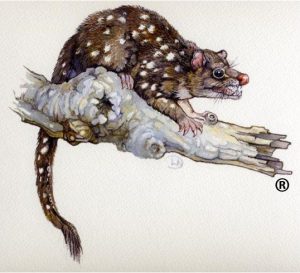IUCN Classification Schemes
“The International Union for Conservation of Nature [IUCN] ^http://www.iucn.org/ is the world’s oldest and largest global environmental network – a democratic membership union with more than 1,000 government and NGO member organizations, and almost 11,000 volunteer scientists in more than 160 countries, with headquarters in Switzerland.
“IUCN, the International Union for Conservation of Nature, helps the world find pragmatic solutions to our most pressing environment and development challenges. It supports scientific research, manages field projects all over the world and brings governments, non-government organizations, United Nations agencies, companies and local communities together to develop and implement policy, laws and best practice.”
IUCN Red List
“The ^IUCN Species Programme working with the ^IUCN Species Survival Commission (SSC) has for more than four decades been assessing the conservation status of species, subspecies, varieties, and even selected subpopulations on a global scale in order to highlight taxa threatened with extinction, and therefore promote their conservation.”
The IUCN Species Programme has complied The IUCN Red List of Threatened Species™ “which provides taxonomic, conservation status and distribution information on plants and animals that have been globally evaluated using the ^IUCN Red List Categories and Criteria. This system is designed to determine the relative risk of extinction, and the main purpose of the IUCN Red List is to catalogue and highlight those plants and animals that are facing a higher risk of global extinction.”
“In order to ensure global uniformity when describing the habitat in which a taxon occurs, the threats to a taxon, what conservation measures are in place or are needed, and whether or not the taxon is utilized, a set of standard terms (Classification Schemes) have been developed for documenting taxa on the IUCN Red List. The three Classification Schemes used in this version of the Red List are:
- The ^major_habitats a species occurs in;
- The ^major_threats to a species (past, ongoing and future); and
- The ^conservation actions needed for a species.”
The IUCN Conservation Actions Classification Scheme (v 3.0)
SOURCE: ^http://www.iucnredlist.org/technical-documents/classification-schemes/conservation-actions-classification-scheme-ver2“The hierarchical structure for the conservation actions needed as shown below. Note: Assessors are asked to use this Classification Scheme to indicate the conservation actions or measures that are needed for the plant or animal concerned. In suggesting what actions are needed, assessors are asked to be realistic and not simply select everything. The selection should be for those actions that are most needed and that could realistically be achieved within the next five years.”
- 1 Land/water protection
- 1.1 Site/area protection
- 1.2 Resource & habitat protection
- 2 Land/water management
- 2.1 Site/area management
- 2.2 Invasive/problematic species control
- 2.3 Habitat & natural process restoration
- 3 Species management
- 3.1 Species management
- 3.1.1 Harvest management
- 3.1.2 Trade management
- 3.1.3 Limiting population growth
- 3.2 Species recovery
- 3.3 Species re-introduction
- 3.3.1 Reintroduction
- 3.3.2 Benign introduction
- 3.4 Ex-situ conservation
- 3.4.1 Captive breeding/artificial propagation
- 3.4.2 Genome resource bank
- 3.1 Species management
- 4 Education & awareness
- 4.1 Formal education
- 4.2 Training
- 4.3 Awareness & communications
- 5 Law & policy
- 5.1 Legislation
- 5.1.1 International level
- 5.1.2 National level
- 5.1.3 Sub-national level
- 5.1.4 Scale unspecified
- 5.2 Policies and regulations
- 5.3 Private sector standards & codes
- 5.4 Compliance and enforcement
- 5.4.1 International level
- 5.4.2 National level
- 5.4.3 Sub-national level
- 5.4.4 Scale unspecified
- 5.1 Legislation
- 6 Livelihood, economic & other incentives
- 6.1 Linked enterprises & livelihood alternatives
- 6.2 Substitution
- 6.3 Market forces
- 6.4 Conservation payments
- 6.5 Non-monetary values







